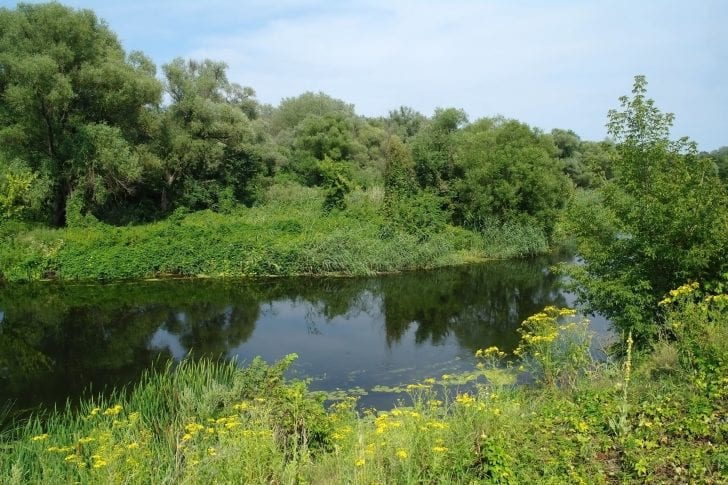It seems everywhere in America, you are never more than a few minutes from a pond full of fish. Neighborhoods, parks, even some shopping centers have ponds within easy reach and sites like Google Earth will open up every piece of water, so start exploring.
Here’s what we recommend. Topwater, topwater, we love you topwater
Then, grab a 5-6 weight fly rod and a small box of flies and get ready to start enjoying your lunch breaks again. Flies should be simple, effective, and able to reach all depths of the water column.
Here’s what we recommend. Topwater, topwater, we love you topwater. There is really no better experience than a feisty bluegill or a acrobatic largemouth smashing a fly resting on the surface.
These flies can range from the small foam spiders, crickets, to intricate baby ducks spun from deer hair but I’ve found that the smaller to mid-sized offerings work best (sz 4-8). Both hard and soft foam poppers are available and I like each in different scenarios.
If I am fishing under trees or other brush, I prefer the louder splash of a hard popper. Representing something that fell out of the tree, this splash will attract nearby predators instantly.
If the fish are more pressured or the water has little structure on the banks, I’ll use a soft popper that spooks less fish.
Vary your retrieve until you find what the fish prefer…some days they like it ripped across the surface quickly and other days, they wont attack until all movement is stopped.
No discussion about flies would be worthy without mentioning the famed Wooly Bugger
While generally more productive early and late in the day, topwater is where I like to start- its just more fun seeing and hearing it all happen.
No discussion about flies would be worthy without mentioning the famed Wooly Bugger. Designed to imitate a hellgramite nymph, the bugger can be stripped or dead drifted with great results.
The marabou feather tail pulsates underwater and is often irresistible. Olive, black, or white are my first choice, but any color could work. By varying the weight of the fly you can control its depth and sink rate.
Many fish will hit as the fly drops so maintain a tight line and watch the line for any movement. Short erratic strips work well in the ponds with these streamer favorites.
Clouser minnows are also very effective at reaching fish that are holding a little deeper. The lead eyes create a jiggy action to the fly when stripped and also allow the hook point to remain up (to reduce snags).
Tied in every conceivable color combination, I tend to stick with colors to mimic local prey items: olive/white for baby bass, root beer/orange for crawfish, etc.
You may also enjoy reading The Fall of the Redfish
Here again, you can vary the eyes on the fly to control sink rate. Shorelines call for lightweight bead-chain eyes, while heavy lead will help dredge up that lunker hanging at the drop off.
Other useful flies include Pat’s rubber legs and other small nymphs. Either fish them on their own or suspend them off the hook bend of a topwater fly to not only up your chances, but the floater will help you detect strikes you might of missed while fishing subsurface.
Don’t go overboard carrying a bunch of patterns with you, but rather have a few proven flies in different colors so you’ll be able to keep it quick and light. Even if you only have an hour or two, you can still enjoy catching a few fish on the fly…and they’re is no boat to wash!
Scotty Davis – Lowcountry Fly Shop / Lowcountryflyshop.com




